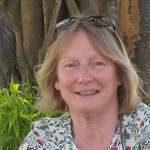Marine Harvest, one of the world’s largest salmon producers, recently produced a salmon farming industry handbook, with the aim of giving its investors and interested parties a better insight into the salmon world.
It points out that around 70 percent of the world’s salmon is farmed, principally in Norway, Chile, Scotland and Canada, but also in Australia and the Faroe Islands, and that salmonids account for 4.2 percent of global seafood supply.
Fish in general only provides for 6.5 percent of the global protein requirement for human consumption, and Asia is the largest seafood consumer.
Carp, barbell and cyprinids are the biggest farmed sector accounting for around 27 million metric tons (MT) in 2013, followed by molluscs (15 million MT), crustacea (6 million MT) and tilapia species (4.5 million MT). Atlantic salmon at 2 million MT is on a par with pangasius, with total salmonid production reaching around 3 million MT.
Global production of all manufactured feed in 2013 was 960 million MT, of which just 4 percent or 40.4 million MT went into aquafeed.
The report goes into detail on various species, large and small, ranging from Atlantic to pink, chum, coho, sockeye and king/chinook. The report describes both wild and farmed versions, along with the general geographical area where the fish are caught, and how they are used, be it in sushi, fillets or smoked. Countries where the fish are caught and sold vary, from the United States to Japan, Russia, Norway, Chile and the Faroe Islands.
The freshwater production cycle for salmon takes approximately 10-16 months and the total seawater production cycle takes approximately 14-24 months, giving a total cycle length of 24-40 months. In Chile, the cycle is slightly shorter as the sea water temperatures are more optimal.
On the thorny question of feed conversion ratios, the handbook points out that cattle varies between 4.2-to-1 and 9.8-to-1 depending on the amount of feed used and whether they are finished on cereal or grass, pork is 3-to-1, poultry 2.2-to-1 and salmon 1.1-to-1.
Salmon also has the highest edible meat yield of all these species, at 61kg per 100kg fed and the lowest carbon footprint at 2.9kg CO2/kg edible meat.
When it comes to marketing, each producing region has historically focused on developing nearby markets. Norway has traditionally sold to the EU, Russia and Asia; Chile to the United States, South America and Asia; Canada to the U.S. West Coast; and Scotland to the U.K. domestic market and France, and more recently to a growing market in Asia.
In the EU, more than half of the Atlantic salmon supply (68 percent) went to retailers in 2014, and just over half was sold fresh. Fillets have the largest market share at 47 percent, followed by smoked salmon at 28 percent.
The European market for smoked salmon was estimated at 175,000 MT finished product weight in 2014, and Germany and France are the largest markets, with a 25 percent and 22 percent share respectively.
The handbook also covers feed requirements, farming methods, finance and barriers to entry, as well as historical market pricing, and primary and secondary processing. In short, it makes for a fascinating read. It can be downloaded from www.marineharvest.com.






